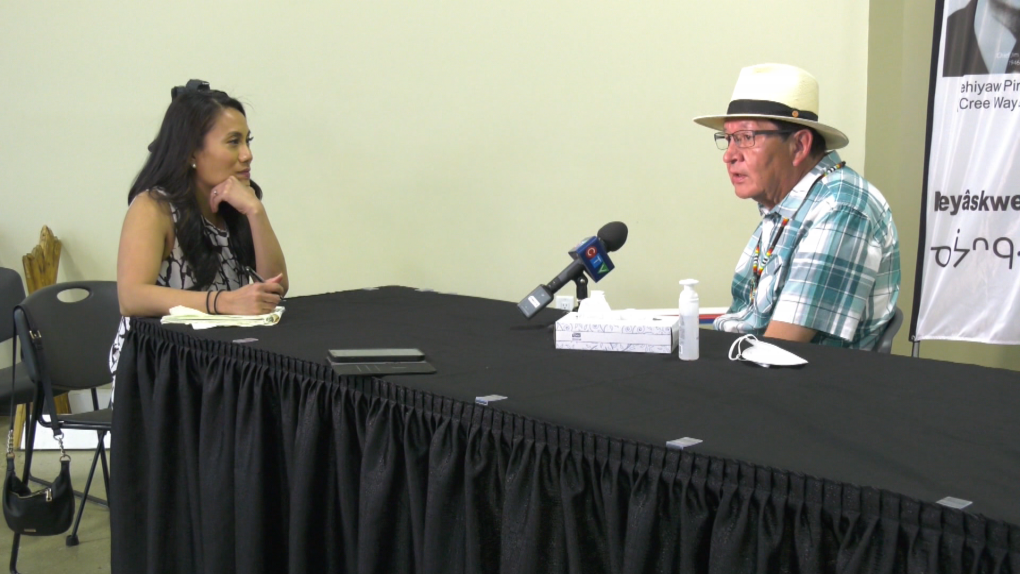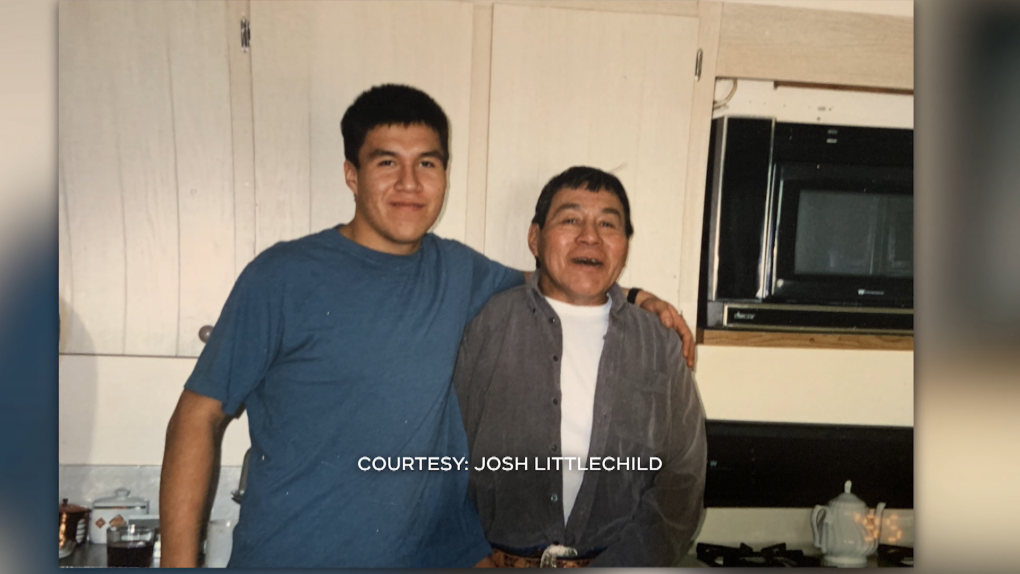When Pope Francis’ tour of Canada was announced in June, it was floated that Edmonton would share hosting responsibilities with just two other cities as a strategy to accommodate the pontiff’s restricted mobility.
In the pope’s itineraryMaskwacis, a community south of Alberta’s capital city, introduced itself to the world as “home to the former Ermineskin Residential School, one of the largest residential school sites in Canada.”
On July 25, Francis will participate in a formal program there and is expected to reiterate an apology for the Roman Catholic Church’s role in Canada’s government-funded, church-run residential schools. It is estimated that more than 150,000 First Nations, Métis, and Inuit children were students of the system during the 18th and 19th centuries, which largely denied them access to their own communities, cultural practices, and proper care.
Pope Francis is not scheduled to attend any other residential schools while in Canada.
Those who know Maskwacis well believe that it was selected for its history, location, Catholic ties, and openness.
HISTORY OF THE RESIDENTIAL SCHOOL
The province of Alberta was home to 25 of Canada’s 139 residential schools, more than any other jurisdiction.
Maskwacis consists of four nations, including the Ermineskin Cree Nation, where the Ermineskin Residential School was open from 1895 to 1975.
According to the National Center for Truth and Reconciliation (NCTR), overcrowding and disease were problems at the beginning of the school’s operation. The NCTR has so far identified 15 students who died at school.
When six-year-old Bruce Cutknife started attending the school in 1960, he spoke only Cree.

“The fact that we didn’t understand the instructors would mean punishment,” said the 68-year-old soon to meet CTV News Edmonton. “If you didn’t immediately respond to what they wanted, then you were punished. Slap in the face. Ruler in hand. Ringing in the ears. Boxing in the ears.”
He recalls seeing other students beaten and tied up.
“You are constantly afraid of making a false move, trying to do the right thing and appease your tormentor. So at the time, I didn’t realize what was going on,” he said of the intent and assimilative effect of Canada’s residential school.
Josh Littlechild’s father never discussed his experience at the same residential school until recently.

“He said, ‘Son, I lived through it. All those stories you heard, all the worst happened to me,'” Littlechild recalled.
“After 73 years carrying this, he’s only talking about it now. And for me, that gives me a lot of hope because even when I turn 80, I’ll be able to heal and let things flow.”
With the consultation of his elders and in a ceremonial manner, Maskwacis tore down the building in the 1990s and built Ermineskin Senior Junior High School. In the decades since, enrollment on the reservation has risen from 30% to 70%, says Matthew Wildcat, a professor of political science and native studies at the University of Alberta who grew up in Maskwacis.

“There is a symbolism because you have a new school that has been put in place and it has been a successful school and a real beacon of hope, I think, for First Nations education in this country,” he commented.
The Ermineskin Cree Nation is also home to Chief Wilton Littlechild, the former Grand Chief of the Six-Nation Treaty Confederacy, Wildcat noted. Littlechild was involved in the drafting of the United Nations Declaration on the Rights of Indigenous Peoples, the repatriation of Canada’s constitution, and the Canadian Truth and Reconciliation Commission.
In April, Littlechild was part of the indigenous delegation that met with Pope Francis in Rome.
PROXIMITY
It has taken a long time to prepare an apology from the Pope.
The Canadian Truth and Reconciliation Commission (TRC) officially apologized from the Pope “to survivors, their families and communities for the role of the Roman Catholic Church in the spiritual, cultural, emotional, physical and sexual abuse of First Nations, Inuit and Métis children in residential schools run by Catholics” in 2015 .
In April at the Vatican, Pope Francis apologized to the indigenous delegation in Italian, saying he was “outraged” and “ashamed” by the abuses suffered in Canada’s residential schools. He promised to travel to Canada; Advocates have said the apology to indigenous peoples would be more meaningful on his own land.
“This is an important healing journey, but on the other hand, it’s not just so people can heal. The Catholic church: They have a responsibility to acknowledge the harms they’ve perpetuated against indigenous people,” Wildcat said. CTV News Edmonton.
“In fact, we should think of it as a floor. The minimum standard of what they should be responsible for.”
When the papal visit was announced in May, it was described as “a pilgrimage of healing, reconciliation and hope.”
And it was announced with some surprise, given the 85-year-old Pope’s knee problems and the recent cancellations of other international trips.
“Clearly, it’s decided,” Edmonton Archbishop Richard Smith, who is coordinating the trip, said in June.
He has said the pope’s itinerary is affected by Francis’s limited mobility: The pontiff cannot travel by helicopter and his participation in each event will be capped at around an hour. The three Canadian cities that are home to Francis – Edmonton, Quebec City and Iqaluit – were chosen because they also provide access to nearby sites, such as Maskwacis, which is just 90 kilometers south of Edmonton.
Also, while in Edmonton, the pope plans to travel about 60 miles northwest to Lac Ste. Anne, where a pilgrimage draws thousands each year.
ALC STE. ANNA’S PILGRIMAGE
Wildcat speculates on the annual Lac Ste. Anne’s pilgrimage was a “critical” factor in Francis going to Alberta.
In the Alexis Nakota Sioux Nation oral history, a Nakota chief led his people to a lake called Wakamne. A Catholic mission was established there in the 1840s and is named after Saint Anne, the mother of Mary. The first pilgrimage to Lac Ste. Anne was organized in 1889.
The event has grown over the years to attract up to 40,000 people.
On July 26, marked by Catholics as the Feast of Saint Anne, Pope Francis will offer a public Mass at Edmonton’s Commonwealth Stadium before participating in a prayer service at Lac Ste. Ana.
“It’s an important site … that indigenous peoples are connected to and have a relationship with Catholicism,” Wildcat said, adding that there is also a “real syncretism” of Catholic spiritual practices and believe in Maskwacis.
“They have been married in a way, the church and Catholic practices with Cree spiritual practices. It is a community where both exist.”
He pointed out that a second Maskwaci nation, the Samson Cree Nation, was not Catholic when residential schools began to open. Instead of sending their children to a residential school elsewhere run by another church, many families converted to Catholicism so that their children would be sent to the nearby Catholic institution.
“So part of what also created this marriage between the community and the Catholic church in the community is that people were really thinking, how are we going to deal with this situation in the 1920s where our children are forced to attend residential schools?” said the bobcat.
OPEN, BUT CRITICAL COMMUNITY
Wildcat believes that the Maskwacis community is perfect to receive the Pope because its people “are open and willing to do an event like this”, but “bring a critical look at what it means”.
“For many people, this apology can even provoke feelings of anger, because what does an apology actually do?” she asked her.
Others ask similar questions.
“You can see the virulence and anger expressed by a lot of people, especially on social media, at what’s going on and the very idea of the institution that perpetrated these crimes against children, you have to remember that they were children, to go in and have so much lavishness and praise heaped on them for having to come and issue an apology,” Cutknife said.
“But on the other hand, the head of such a large institution comes to a small community like ours to come and express his remorse for what has happened.”
Another Ermineskin Residential School survivor, Karen Wildcat, sees the papal visit as an opportunity.
“I’m happy he’s coming, but I’ve started my healing journey,” he said. “I am happy for people who can also start their healing journey for those who have not started yet.”
She plans to participate in the papal visit, while Cutknife knows he won’t. Littlechild and her father had not yet decided what they wanted to do when she spoke to CTV, but she was hopeful that her family would finally acknowledge the trauma they experienced.
“Hopefully the apology is sincere and sincere and means a lot, because it’s not just for our community, it’s for all indigenous people,” Cutknife added. “Not only in Canada, but all over the world we have been colonized and punished by [our] beliefs and way of life as savages”.
Archived by Nicole Lampa and Brandon Lynch of CTV News Edmonton and CTVNews.ca